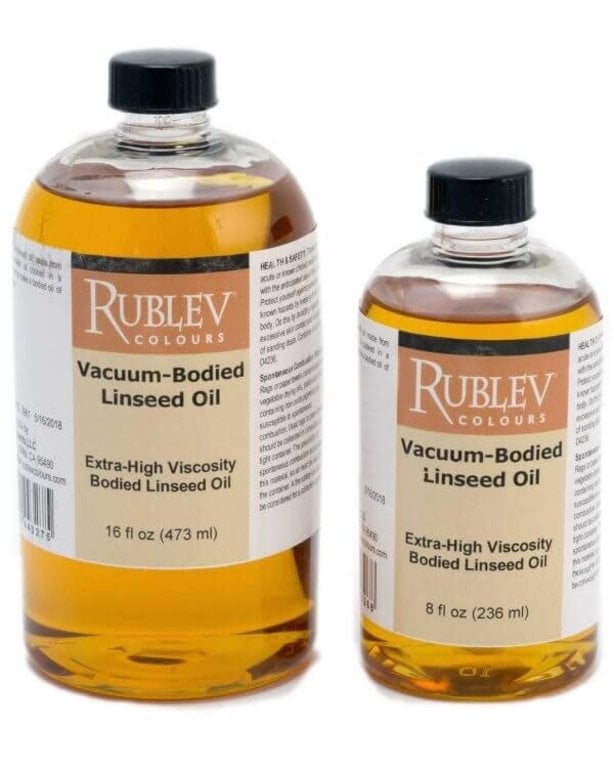



Login
Log in if you have an account
Register
By creating an account with our store, you will be able to move through the checkout process faster, store multiple addresses, view and track your orders in your account, and more.
Create an accountStand oil is is heat treated and polymerized (thickened) oil. This heat-bodied oil is made from well-refined linseed oil from American flax seeds that is cooked in vacuum-kettles. Vacuum-Bodied Linseed Oils are perhaps the finest heat-polymerized oils available. Made by a special vacuum process, they possess low acid numbers and exceptionally light color. All viscosities (see table below) give superior gloss, flow, brushability, and non-yellowing characteristics compared to ordinary heat-bodied oils. They yellow less than bodied oils obtained by conventional open-kettle cooking and unbodied oils. Low-temperature vacuum cooking keeps gelatin to a minimum and prevents thickening or “livering.” We supply these oils in four standard viscosities from low to extra-high. Meets Federal Specification TT-L-201, Type 2.
Vacuum-bodied linseed oil is a stand oil that gives gloss, brushabilty and non-yellowing characteristics when compared to other stand or bodied oils. Bodied oils form harder films than raw or refined linseed oil, including cold-pressed oil.
Use
Add to oil paint to increase brushability, gloss, flow and level out and hold out. Start with 10% and gradually increase to 30%. As you increase you will the proportion of bodied oil to oi paint or oil painting medium, you will experience more tackiness and drag while brushing and increased gloss in the dried paint film.
Adding large amounts of bodied oil may increase the tendency of oil paint to wrinkle (alligator). Adding as little as 10% by volume of bodied oil to painting mediums increases the viscosity of the medium and slows the drying time.
Use turpentine, spike oil or mineral spirits as the solvent for bodied oils and for brush and studio clean up.
Origin and History
The term "stand oil" is derived from the Dutch word that designated a drying oil heat treated and aged by standing in tanks. Later it applied to oils that were bodied by heat treating for prolonged periods in open kettles. Stand oil, invented in the 19th century, replaced Venice turpentine and sun-thickened linseed oil in artists' painting mediums. Stand oil leaves an enamel-like finish to paint. Bodied oils form harder films and yellow less than refined or raw linseed oils, including cold-pressed oils. The use of the term "stand oil" is antiquated since bodied oils today are processed differently than those in the 19th century.
Source
Linseed oil is a yellowish drying oil derived from the dried ripe seeds of the flax plant (Linum usitatissimum, Linaceae).
Add your review
Review Rublev Colours Vacuum Bodied (Medium Viscosity) Linseed Oil 8 fl oz / 236 ml
